Focus
Peter
Tscherkassky
Part 1
Analog Screening
Tscherkassky
The focus presents a retrospective about Peter Tscherkassky, in conversation with the curator and film historian Federico Rossin, around the idea of Found Footage as a peculiar film technique to explore media imagery as a resource to be raided and reused. Found Footage belongs to that tradition of modernist art , such as the dadaistic readymade and photomontage, for instance, that is using collage as a deconstructive technique to rethink reality and its media representations. In apprehending consumer culture, Found Footage operates a détournement upon reality. A specific form of cinematic and photographically-based appropriation that tends to contrast dominant imagery by creating counter images and filmic subordinates.
Fracto presents it in a 2-night all analog program.
Peter Tscherkassky
Peter Tscherkassky (Vienna - 1958) is an Austrian avant-garde filmmaker who mostly works with Found Footage. From 1989 to 2002, he taught artistic filmmaking at the Linz University of Arts and Industrial Design. Since 1998 he has taught “Audiovisual Communication/Film” at the Vienna University of Applied Art. The common point of his production dwells in the structural criticism of the conventions that rule narrative cinema. In this regard, Tscherkassky forces the audience to rethink the traditional conception of film.
Sat 23 Oct
21:00 - 23.30 / ACUD KINOPeter Tscherkassky
MOTION PICTURE -LA SORTIE DES OUVRIERS DE L'USINE LUMIÈRE À LYON
1984 / 16mm / b&w / silent / single screen / 3' 00

In the darkroom, 50 unexposed film strips were laid across a surface, upon which a frame of La sortie des ouvriers de l’usine Lumière was projected. The stringing together of the individual developed sections make up the new film, which reads the original frame like a page from a musical score: within the strips from top to bottom and sequentially from left to right.
Peter Tscherkassky
Peter Tscherkassky
SHOT - COUNTERSHOT
1987 / 16mm / b&w / silent / single screen / 0' 30
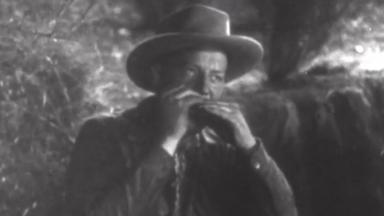
The "Great Syntagmatics of Film" by Christian Metz interprets the feature film as reducible to autonomous segments, that are separated into autonomous shots and syntagmas, whereby the latter can be separated into non-chronological syntagmas (sequence of parallel montage) and chronological syntagmas. Within these is again differentiation between descriptive and narrative syntagmas whereby the narrative syntagmas are divided into alternating syntagmas and linear narrative syntagmas (the linear narrative syntagmas are thereby divorced in scene and sequence). The shot-countershot-technique is a typical linear narrative syntagma.
Peter Tscherkassky
Peter Tscherkassky
HAPPY-END
1996 / 16mm / color / sound / single screen / 12' 00
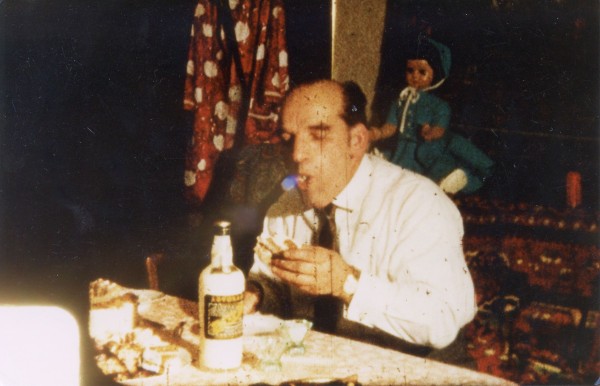
HAPPY END is a found footage film about oral rituals, about festive occasions and about a married couple who understood how to enrich and enliven their cosy togetherness. We see the pair pouring drinks, cutting cakes, making toasts... Finally the exuberant movement of the dancing woman freezes. It is a deeply ambiguous moment that, from the expression on her face, allows one to think of something close to despair. On something like a modern, alienated, baroque vanity motive, which is still present in the Austrian tradition, and whose abrasion with the sensual certainty of the moment of drinking an egg liqueur gives Happy-End a wider meaning
Bert Rebhandl
Peter Tscherkassky
L'ARRIVÉE
1998 / 16mm / b&w / sound / single screen / 3' 00
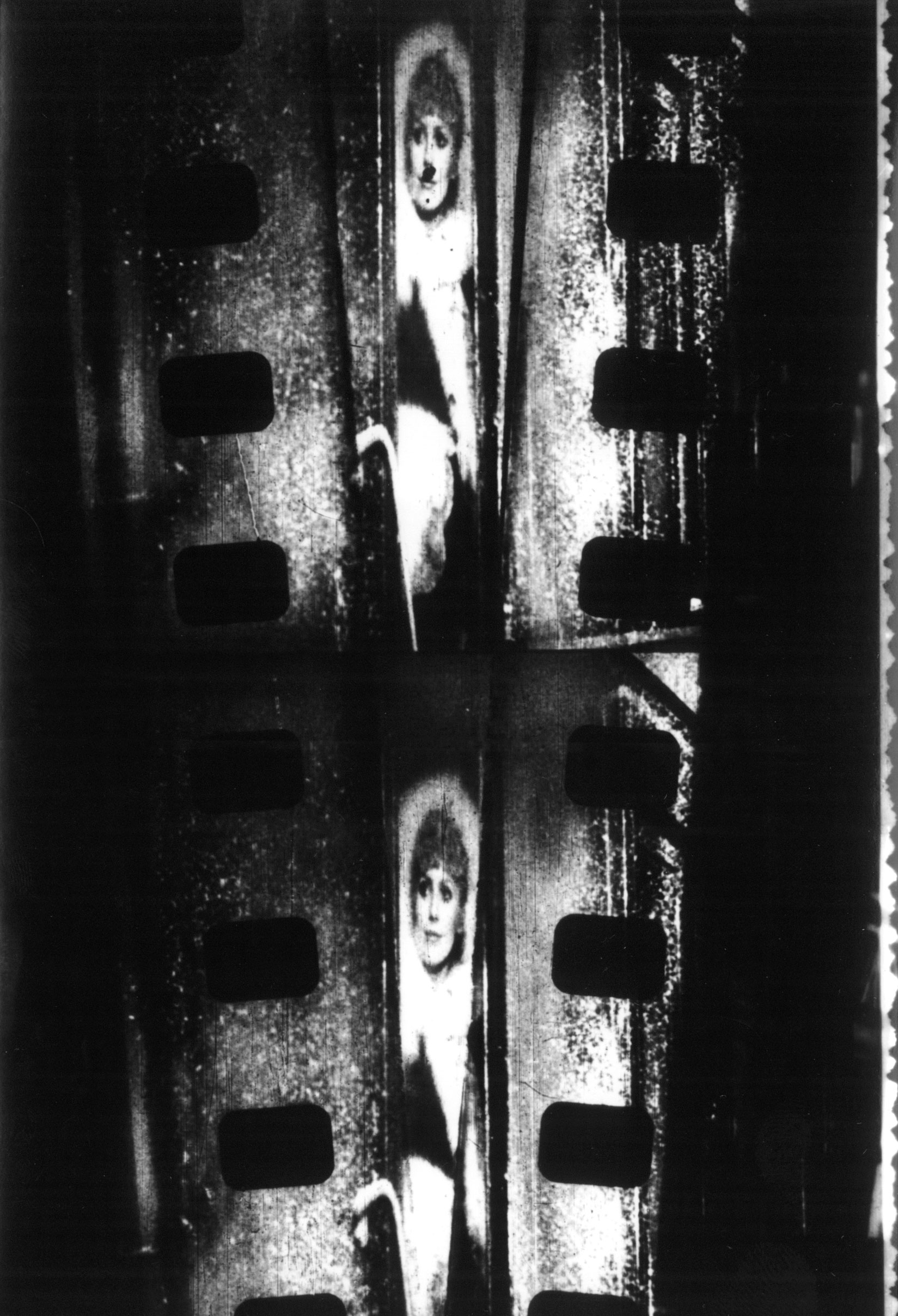
A white screen. Tabula rasa. Panavision. L’Arrivée shines on you like pure projected light, like the white surface still waiting for the marks of the film maker. In L’Arrivée, Peter Tscherkassky goes back to the beginning, back to Lumière and the Lumières who, once upon a time, made a film of a train arriving. And then the dirt begins to invade, the "story", if you like. A frenzy in the soundtrack – it bangs, creaks, crackles and roars. From the right a grey veil approaches: the perforation of a strip of film. L’Arrivée makes cinema from mistakes, from derailments. Half pictures – the misty pictures of a grey delegation in station somewhere – penetrate the white surface. From right and left they run together, crash into each other and strive to separate themselves again. The material comes from Mayerling (1968), a Habsburger melodrama from the British director Terence Young. The Eastman colour which was originally present has been exorcised by the film maker. What Tscherkassky does here is drastically re-configure in CinemaScope. A train arrives and collides with its mirror image. Events begin to turn head over heels. Tscherkassky hystericalises the images. He allows them to lose their certainty, crosses the soundtrack with a perforation strip, changes positive to negative, slits the material open. Inside out and upside down. Phantom images – behind the veil of a film still running amok as if in the grip of a panicking collaborative cinematographic machine. A film star staggers into the final kiss – Catherine Deneuve alights, a man (Omar Sharif – which sounds like j'arrive) hurries towards her. A kiss. Bliss. An end. L’Arrivée is a film in the process of approaching. An orchestrated melodrama of dislocated viewing values made with sheer pleasure in disaster.
Stefan Grissemann
Peter Tscherkassky
OUTER SPACE
1999 / 35mm / b&w / sound / single screen / 10' 00

"A young woman, at night, an American feature film. She enters a house, a dark corridor, a thriller. While she forces her way into an unknown space together with the viewer, the cinematographic image-producing processes go off the rails. The rooms telescope into each other, become blurred, while the crackling of the cuts and the background noise - the sound of the film material itself - becomes louder and more penetrating.The pace becomes frenetic, the woman is being pursued by invisible opponents, pushed against a mirror, walls of glass burst, furniture tilts and the cinematographic apparatus which the heroine begins to attack in blind fury also collapses. The images jump and stutter, the perforation holes tilt into the picture, the sound track implodes in a will o' the wisp destruction scenario - something which only film can do so powerfully. In ten minutes OUTER SPACE races through the unsuspected possibilities of cinematographic errors - a masterpiece."
Stephan Grissemann
Peter Tscherkassky
DREAM WORK
2001 / 35mm / b&w / sound / single screen / 11' 00
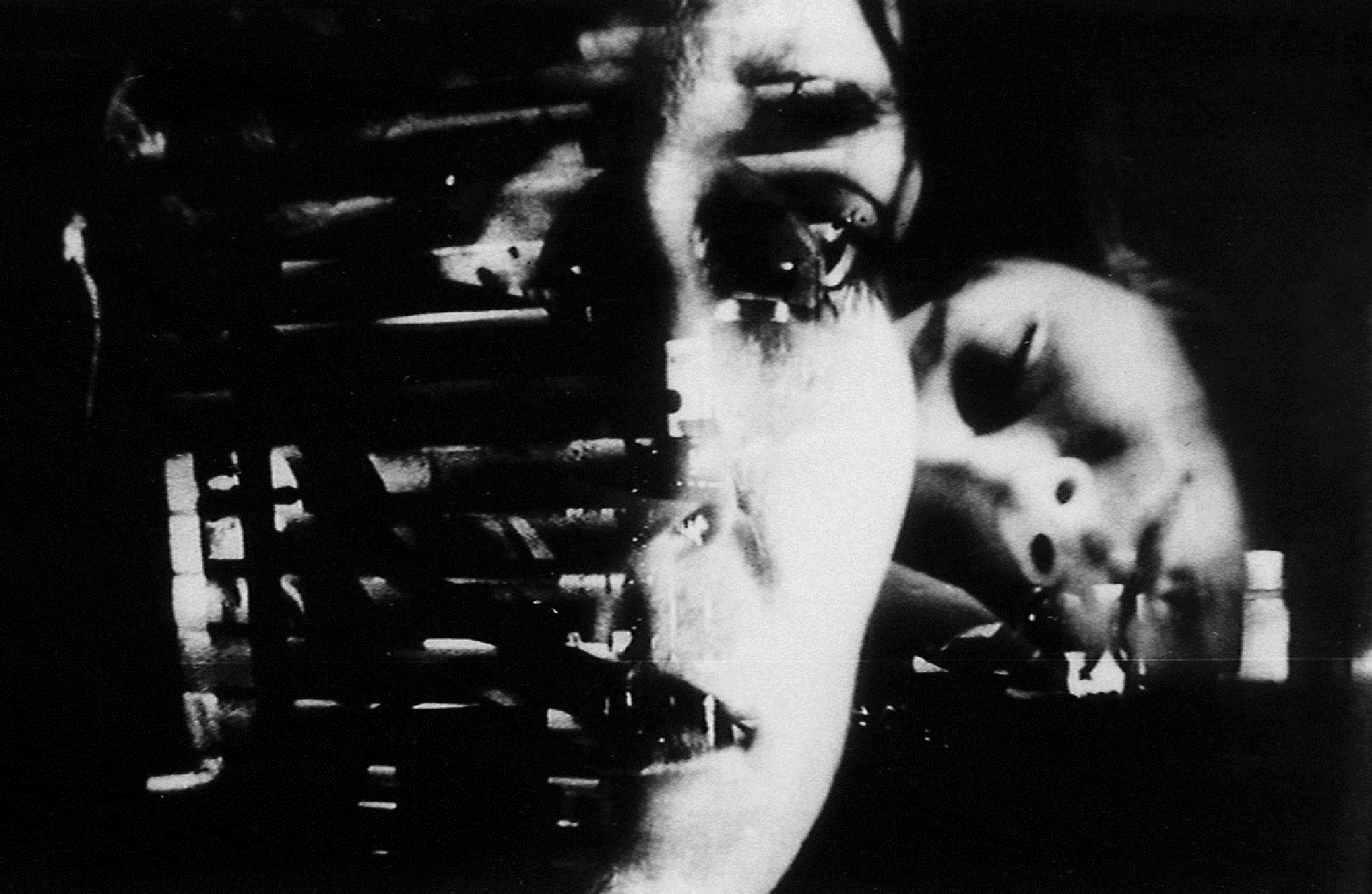
DREAM WORK is a black and white film in CinemaScope, which lasts the time of a phase of deep sleep. A woman goes to bed, falls asleep, and begins to dream. This dream takes her to a landscape of light and shadow, evoked in a form only possible through classic cinematography."Dream Work" is – after "L’Arrivée" und "Outer Space'' – the third section of my CinemaScope Trilogy. The formal element binding the trilogy is the specific technique of contact printing, by which found film footage is copied by hand and frame by frame onto unexposed film stock. Through this, he is able, in a literal sense, to realize the central mechanism by which dreams produce meaning, the "dream work," as Sigmund Freud described it: displacement [Verschiebung] and condensation [Verdichtung]. The new interpretation of the text of the original source material takes place through its "displacement" from its original context and its concurrent "condensation" by means of multiple exposure. Moreover "Dream Work" positions itself as an homage to Man Ray, who, in 1923 with his famous rayographs in "La retour á la raison" was the first artist to use this technique for filmmaking, exposing the image by shining light through physical objects onto the film stock
Peter Tscherkassky
Peter Tscherkassky
INSTRUCTIONS FOR A LIGHT AND SOUND MACHINE
2005 / 35mm / b&w / sound / single screen / 17' 00

The hero of Instructions for a Light and Sound Machine is easy to identify. Walking down the street unknowingly, he suddenly realizes that he is not only subject to the gruesome moods of several spectators but also at the mercy of the filmmaker. He defends himself heroically, but is condemned to the gallows, where he dies a filmic death through a tearing of the film itself. Our hero then descends into Hades, the realm of shades. Here, in the underground of cinematography, he encounters innumerable printing instructions, the means whereby the existence of every filmic image is made possible. In other words, our hero encounters the conditions of his own possibility, the conditions of his very existence as a filmic shade. Instructions for a Light and Sound Machine is an attempt to transform a Roman Western into a Greek tragedy.
Peter Tscherkassky
Peter Tscherkassky
TRAIN AGAIN
2021 / 35mm / b&w / sound / 20' 00 / b&w
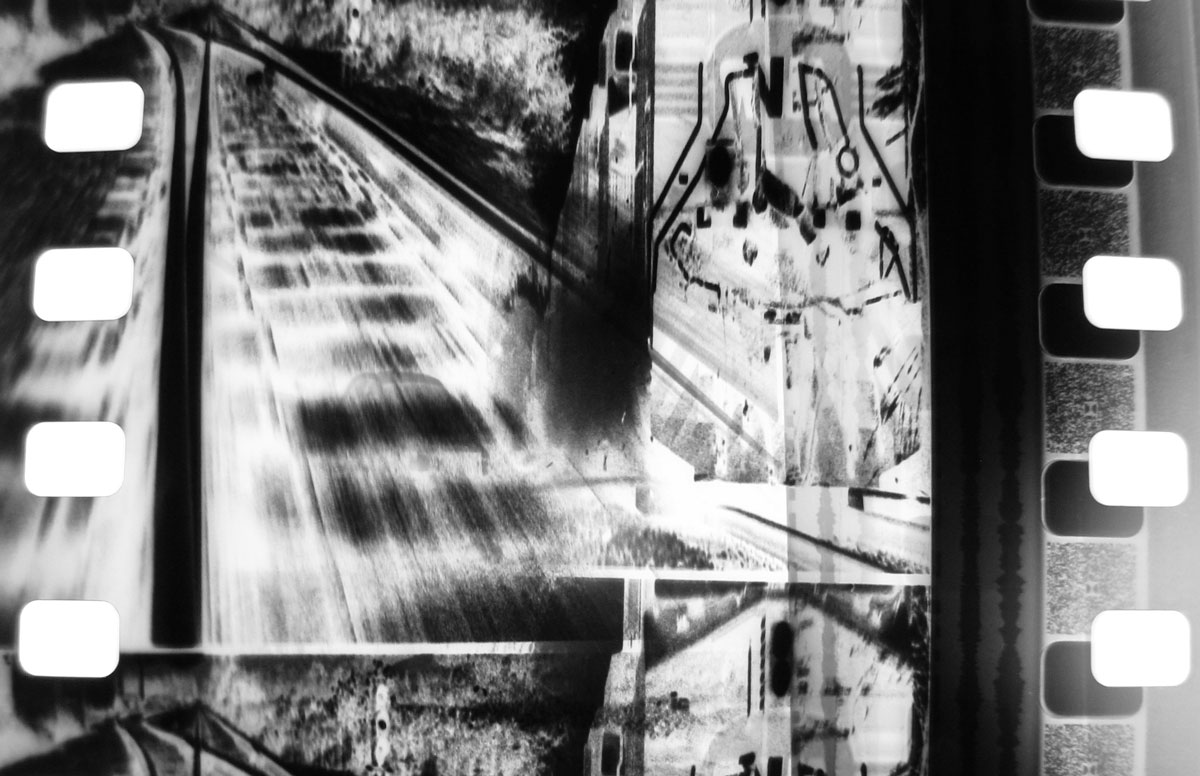
18 years after Kurt Kren produced his third film 3/60 Bäume im Herbst [3/60 Trees in Autumn], he shot his masterpiece 37/78 Tree Again. 18 years after I created my third darkroom film L’Arrivée (an homage to the Lumière brothers and their 1895 L'Arrivée d'un train), I embarked on Train Again. This third film in my “Rushes Series” is an homage to Kurt Kren that simultaneously taps into a classic motif in film history. My darkroom ride took a few years, but we finally arrived: All aboard!
Peter Tscherkassky
SCHEDULE 2021
Thu 21
18:30 / ACUD BACKYARD
Festival Opening
19.30 / ACUD STUDIO
Selection #1
Voyages and Journals
21:30 / ACUD KINO
Focus
Finland
Part 1 - Experimented, (ab)used, remembered
Fri 22
14:00 - 17:00 / ACUD STUDIO Workshop
LaborBerlin
introducing the concept & material w/ examples
18:00 / ACUD STUDIO
Selection #2
Symphonious Cities / Urban Ecologies
20:30 / ACUD KINO
Selection #3
Inner and Outer Space
22:30 / ACUD KINO
Focus
Finland
Part 2 - Consumed, compressed, resurfaced
Sat 23
12:00 - 17:00 / ACUD STUDIO
Workshop
LaborBerlin
Exercises on perception / introducing editing with super8
15:00 - 16:45 / ACUD GALLERY
Occulto presents
textîles – threading speculative archipelagoes (th)reading session – performative presentation by textîles
17:00 - 17:45 / ACUD GALLERY Occulto presents
textîles – threading speculative archipelagoes
publishing textiles – conversation with TAUKO Magazine
18:00 - 20:00 / ACUD GALLERY Occulto presents
textîles – threading speculative archipelagoes
stitch and bitch – social sewing
with Agente Costura
18:00 / ACUD STUDIO
Selection #4
Transfiguration
21:00 / ACUD KINO
Focus
Peter Tscherkassky
Part 1
Sun 24
12:00 - 17:00 / ACUD STUDIO
Workshop
LaborBerlin
Editing the film and screening the results
15:00 - 16:45 / ACUD GALLERY
Occulto presents
textîles – threading speculative archipelagoes(th)reading session – performative presentation by textîles
17:00 - 19:00 / ACUD GALLERY
Occulto presents
textîles – threading speculative archipelagoes
reading session – collective collage of texts with Sina Ribak
20:00 / ACUD KINO
Selection #5
The Personal is Radical
22:10 / ACUD KINO
Focus
Peter Tscherkassky
Part 2